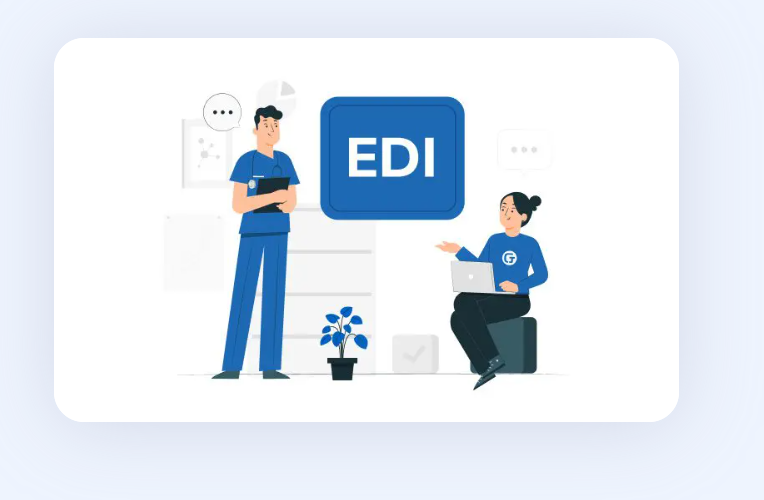In today's fast-paced world, efficiency is the cornerstone of success, especially in the healthcare industry. With the ever-increasing demands on healthcare systems, providers are constantly seeking innovative solutions to streamline operations while delivering exceptional patient care. Enter Electronic Data Interchange (EDI), a game-changer in the realm of healthcare administration.
What is EDI in Healthcare?
Electronic Data Interchange (EDI) revolutionizes the way healthcare organizations exchange vital information. It facilitates the electronic exchange of data in a standardized format, replacing traditional paper-based methods. From patient records and claims processing to billing and insurance verification, EDI automates various administrative tasks, reducing manual errors and enhancing overall efficiency.
Streamlining Administrative Processes
One of the primary benefits of EDI in healthcare is its ability to streamline administrative processes. By digitizing and automating tasks such as patient registration, appointment scheduling, and claims processing, EDI eliminates the need for manual data entry, reducing the likelihood of errors and minimizing processing time. This not only improves operational efficiency but also enhances accuracy and reduces administrative costs.
Enhancing Data Accuracy and Security
In a sector where accuracy and security are paramount, EDI plays a crucial role in safeguarding sensitive healthcare information. By standardizing data formats and employing encryption protocols, EDI ensures that patient data remains secure during transmission. Additionally, the automated nature of EDI healthcare reduces the risk of human error, further enhancing data accuracy and compliance with regulatory requirements such as HIPAA.
Improving Cash Flow and Revenue Cycle Management
Efficient revenue cycle management is essential for the financial health of healthcare organizations. EDI expedites the claims submission and reimbursement process, allowing providers to receive payments faster and optimize cash flow. By automating tasks such as eligibility verification and claims adjudication, EDI accelerates revenue cycle workflows, reducing revenue leakage and improving overall financial performance.
Facilitating Interoperability and Collaboration
In an increasingly interconnected healthcare ecosystem, interoperability is key to facilitating seamless communication and collaboration among stakeholders. EDI promotes interoperability by standardizing data exchange protocols, enabling different systems and platforms to communicate effectively. This interoperability enhances care coordination, facilitates information sharing, and ultimately improves patient outcomes.
Driving Operational Efficiency and Cost Savings
By automating repetitive tasks and reducing manual intervention, EDI enables healthcare organizations to operate more efficiently. This increased efficiency translates into tangible cost savings by minimizing labor costs, reducing paper usage, and streamlining resource allocation. Moreover, the scalability of EDI solutions allows healthcare providers to adapt to changing demands and scale their operations cost-effectively.
Embracing the Future of Healthcare
As the healthcare landscape continues to evolve, embracing technology-driven solutions like EDI is paramount for staying ahead of the curve. By harnessing the power of electronic data interchange, healthcare organizations can unlock new levels of efficiency, improve patient care, and drive sustainable growth. In an era where every second counts, EDI empowers healthcare providers to focus on what matters most – delivering quality care to those in need.
In conclusion, EDI represents a transformative force in the healthcare industry, offering a myriad of benefits ranging from improved efficiency and data accuracy to enhanced interoperability and cost savings. By embracing EDI solutions, healthcare organizations can navigate the complexities of modern healthcare delivery with confidence, paving the way for a healthier, more connected future.





